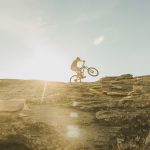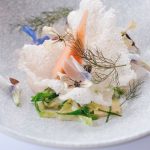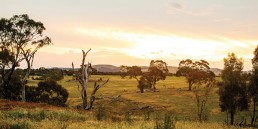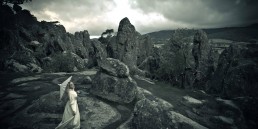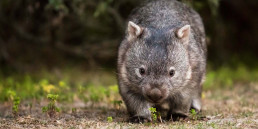Each autumn, visitors come from far and wide to admire the Avenues of Honour within our region as they put on a striking annual show of colour.
However, it’s important to take a moment to reflect on the significance of these sites. This might sound odd, but any time I get a bit down in the dumps, I remind myself of two things: I live in the best country in the world (my opinion only), and I have never had to fight in a war. Of course, one could argue that the two points are related; Australians that came before us endured unimaginable terror and suffering, enabling many of us to live the life we do today.
The men and women who sacrificed a so much in past wars, particularly WWI, are honoured and recognised in different ways, but I think that one of the most important, are the Avenues of Honour; stands of trees that you find on the outskirts of over 500 Australian country towns. This tradition started in our region, and most of our towns have rows of exotic trees, greeting you on their outskirts.
I feel a deep sense of poignancy as I drive past these memorials. The very fact that every tree is symbolic of a person who fought in war is highly evocative, particularly when you consider the fact that men from the same town were usually grouped, and fought, together. This means that in any heavy battle defeat, many men from that town died together. Just imagine the impact of this on a tiny town.
I spend a lot of time in the car. Driving to meetings, taking my girls to swimming lessons, or just day tripping through the region with my family. So, I see these avenues in all sorts of light: some days the hills are shrouded in mist and the tall trees feel like sentinels watching over us. In autumn, the leaves of the trees are brilliant red and gold, and as the sun catches them, I’m enthralled, and reminded of our fortunate lives.
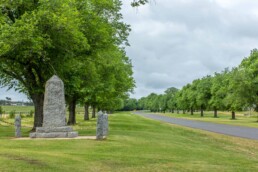
Some of these avenues are famous, such as Honour Avenue in Macedon. People come from far and wide to marvel at the colours, often not realising the significance of these trees. Indeed, the influx of visitors can be hectic and overwhelming, and I’d urge you to seek out lesser known – but equally beautiful – Avenues of Honour. Take the time to reflect, read the plaques, and then head into town and mingle with the locals in a café or pub. To help, I’ve listed a few of my favourites.
One of the most significant Avenues is found in the small hamlet of Kingston. 286 trees were planted at the end of WWI, and the avenue is almost three kilometres long. Several of the trees are dedicated to nurses who served during the war. While you’re there, pop into the Commercial Hotel for lunch. Kingston is tiny, but well worth the visit.
I live between Daylesford and Glenlyon so am a little biased, but I do love Daylesford’s Avenue of Honour, which greets you as you come into town from the east. The Sunday market, Cliffy’s and other well-known highlights are right there.
Further east, Glenlyon’s stand of trees creates a tunnel-like effect which enhances the beauty of this lovely town, and the trees, which alternate between oak and elm, also seem to frame the much-loved (and photographed) General Store.
Continuing east, the Avenue at Drummond has fifty elms, eleven of which commemorate fallen soldiers, and Woodend, recently ranked as Victoria’s most liveable regional town, has one of my favourite Avenues. There’s lots to do here too: my kids love the Woodend Children’s Park.
These are just a few.
These avenues are usually preserved, and the plaques and obelisks maintained, by small community groups (with help from respective Councils). The dedication of these groups is important.
So, next time you drive into a town around here, tip your head to these quintessentially Australian symbols of gratitude, respect and, of course honour.
Sometimes we need reminding just how lucky we are.
For information about these and other Avenue, visit avenuesofhonour.org or monumentaustralia.org.au.
Hero image: Judah Grubb
About the author

Steve Wroe, Daylesford Macedon Tourism
Steve’s passion for mountain biking takes him all around our region. He lives in Daylesford with his wife, two young girls and three chickens. On most weekends, he and his family explore; either piling into the car and taking a drive to a small town, or putting on the hiking boots and going for a bushwalk. Steve is a big believer in the benefits of rural living and loves introducing his girls to the history, culture and nature of the region. Occasionally they take their bantam chook, Lulu, on their adventures.
- Steve Wroe, Daylesford Macedon Tourismhttps://daylesfordmacedonlife.com.au/author/steve-wroe-daylesford-macedon-tourism/November 20, 2018
- Steve Wroe, Daylesford Macedon Tourismhttps://daylesfordmacedonlife.com.au/author/steve-wroe-daylesford-macedon-tourism/November 5, 2019
- Steve Wroe, Daylesford Macedon Tourismhttps://daylesfordmacedonlife.com.au/author/steve-wroe-daylesford-macedon-tourism/February 28, 2020
Share this article
While You're Here
The Thrill of the Hunt
It's a frosty winter's morning at Black Cat Truffles in the central Victorian highlands and the…
Win a Best Autumn Escape
Tourism is an enormous contributor to the financial and social health of regional Victoria. If…
High on a Hill a Legend Grows
It is very quiet and still on the craggy hilltop until a biting wind whips the gum leaves from…
Eerie ‘Picnic at Hanging Rock’ Book Facts
Picnic at Hanging Rock has been widely interpreted by many literary experts. Some explanations…
Where the Wildlife Roams
Look up as the wedgetail eagles soar and dip across the bright blue skies. Look about as echidnas…
Spring to Life: The Mineral Springs of the Region
‘Wealth’ can be admired all around the Daylesford Macedon region. The gold rush adorned our…




